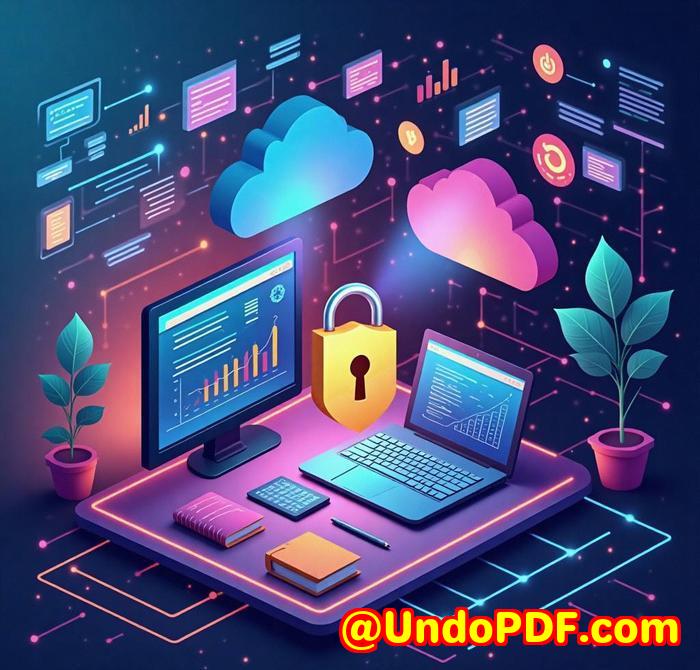Why Watermarking Protected PDFs is Essential for Internal Government Data Circulation
Meta Description:
Learn how watermarking protected PDFs can help secure sensitive government data and prevent leaks, ensuring better control over document distribution and access.

The Struggle with Internal Data Circulation
Every time I worked in a government department, the challenge of circulating sensitive documents internally was a nightmare. You know the drillsending reports via email, printing hard copies for meetings, and dealing with the constant fear of documents falling into the wrong hands. Worse yet, the risk of employees or contractors mishandling the data or sharing it without authorisation. We were under pressure to ensure that our data didn’t leak, but how could we do that securely without complex passwords or risky cloud storage?
Then, I discovered VeryPDF DRM Protector, and things started to change.
How VeryPDF DRM Protector Solved My Problem
When I first started using VeryPDF DRM Protector, I was looking for something that could secure PDFs without the complexity of password management or relying on unreliable encryption. The solution needed to be straightforward, ensuring that only authorised personnel could view or print these documents, but also allow easy distribution without unnecessary barriers.
VeryPDF DRM Protector is a tool designed to provide tight security around PDF documents. It offers a range of features tailored to internal data circulation, especially in sensitive environments like government agencies. Here’s what I found to be most useful:
-
Watermarking Protected PDFs: You can apply both permanent and dynamic watermarks to your documents. These watermarks aren’t just for brandingthey’re an excellent deterrent against unauthorised sharing or copying. If someone tries to take a screenshot, the watermark will be visible, making it clear that the document is protected.
-
Restricting Document Access: Unlike traditional password protection, you can decide when a document expires or restrict its use after a certain number of views or prints. This means if an internal document needs to be circulated for review, but only within a specific timeframe, you can ensure it isn’t accessible beyond that window.
-
Locking Documents to Devices: One of my favourite features is the ability to lock PDFs to specific deviceswhether it’s a desktop computer, tablet, or even a USB stick. This ensures that the document is not shared freely across multiple devices, which adds an extra layer of security.
Why Watermarking is a Game-Changer
For government agencies, the security of internal documents is crucial. Here’s how watermarking plays a key role:
-
Prevents Document Sharing: If someone tries to screenshot or share a document, the watermark can be visible in the screenshot or print, ensuring the person knows the document is confidential. This deterrent factor alone can reduce leaks.
-
Traces the Source of Leaks: Watermarking isn’t just about securityit’s about accountability. If a document leaks, it’s easy to trace back to the source of the leak, which can be invaluable in sensitive cases.
-
Dynamic Watermarks: With VeryPDF DRM Protector, you can also use dynamic watermarks, such as displaying the viewer’s name or IP address. This makes it even more difficult to distribute documents without leaving a trace.
Real-World Example: Securing Internal Reports
I used to be responsible for distributing internal reports in a government department. Each report contained sensitive data that could easily be exploited if mishandled. After implementing VeryPDF DRM Protector and watermarking all PDFs, the risk of unauthorized distribution drastically decreased.
Before the tool, it was hard to control who could print or view a document once it left the office. Now, I can set expiration dates, restrict printing, and even ensure that only a specific device or group of devices can access the document. I’ve found peace of mind knowing that even if the documents are forwarded, they are still secure and traceable.
The Bottom Line: Highly Recommended for Government Departments
If you’re dealing with sensitive PDFswhether it’s internal memos, policy reports, or data analysisI’d highly recommend VeryPDF DRM Protector. It’s a simple, effective tool that ensures your PDFs are safe from unauthorised access and sharing.
To try it out for yourself and get the same peace of mind I did, click here: https://drm.verypdf.com/
FAQ
1. How does watermarking protected PDFs work?
Watermarking applies visible or invisible marks on your PDFs to make them traceable if shared without permission. VeryPDF DRM Protector allows for both dynamic and permanent watermarks.
2. Can I restrict the number of views or prints on a PDF?
Yes, with VeryPDF DRM Protector, you can control how many times a document can be viewed or printed, and you can set expiry dates for documents to ensure they aren’t accessible beyond a certain point.
3. How does the device locking feature work?
You can lock a PDF to specific devices, ensuring that it can only be accessed from those devices, preventing unauthorised sharing and access across different machines.
4. Can watermarks be removed from PDFs?
No, watermarks applied by VeryPDF DRM Protector cannot be removed by users. They are an integral part of the document’s security.
5. Is it easy to set up VeryPDF DRM Protector for a team?
Absolutely. The setup process is user-friendly, and the tool is designed to work with teams of all sizes. It’s quick to deploy and doesn’t require advanced technical knowledge to get started.
SEO Keywords:
watermark protected PDFs, government document security, internal data circulation, PDF DRM, secure PDF distribution, protect sensitive PDFs